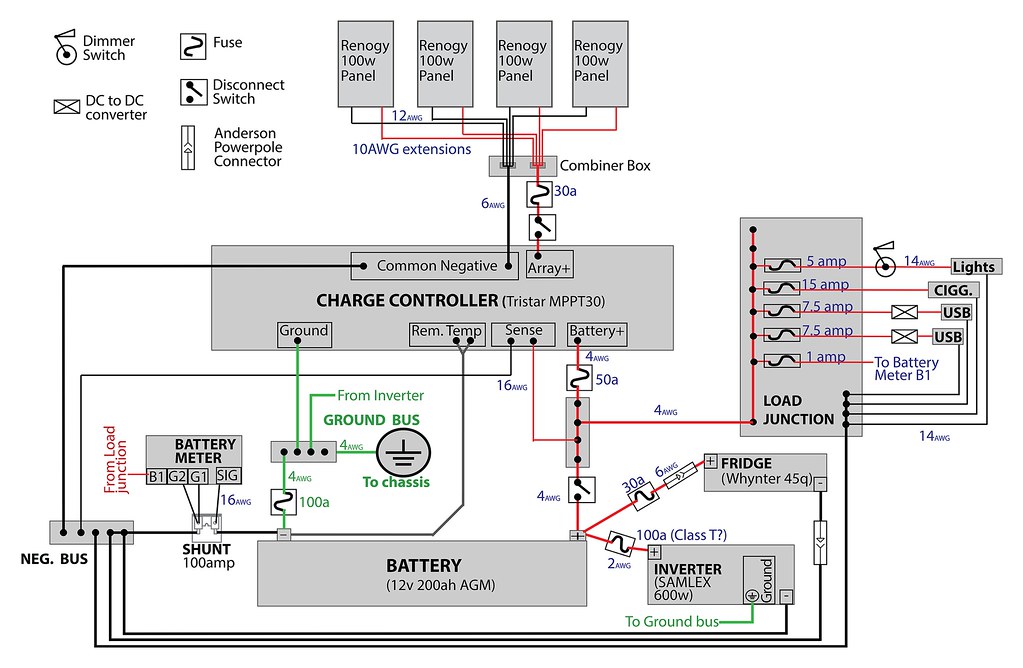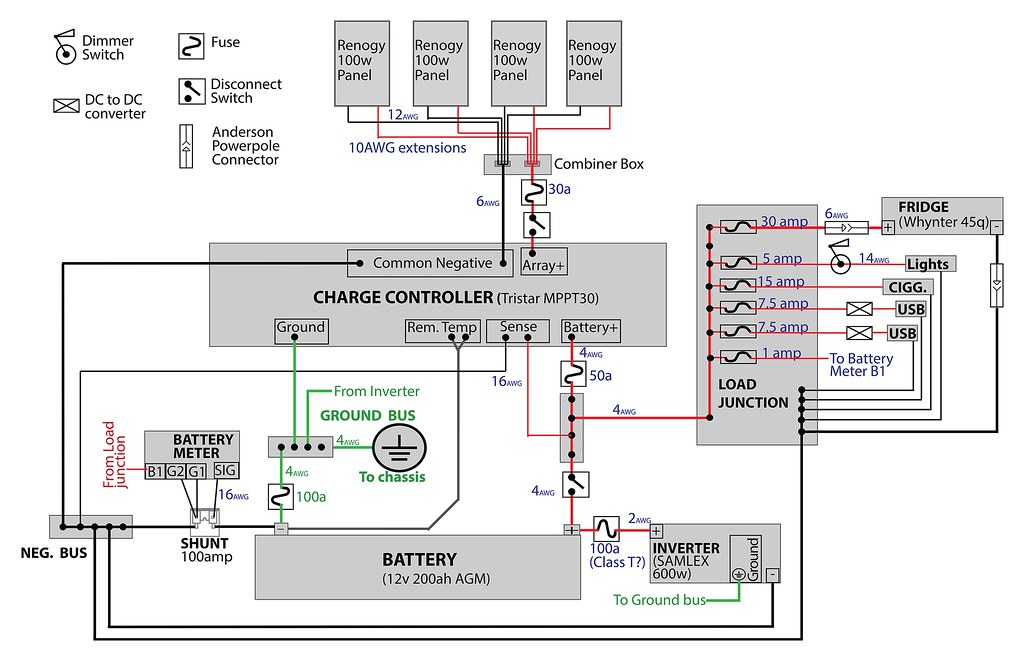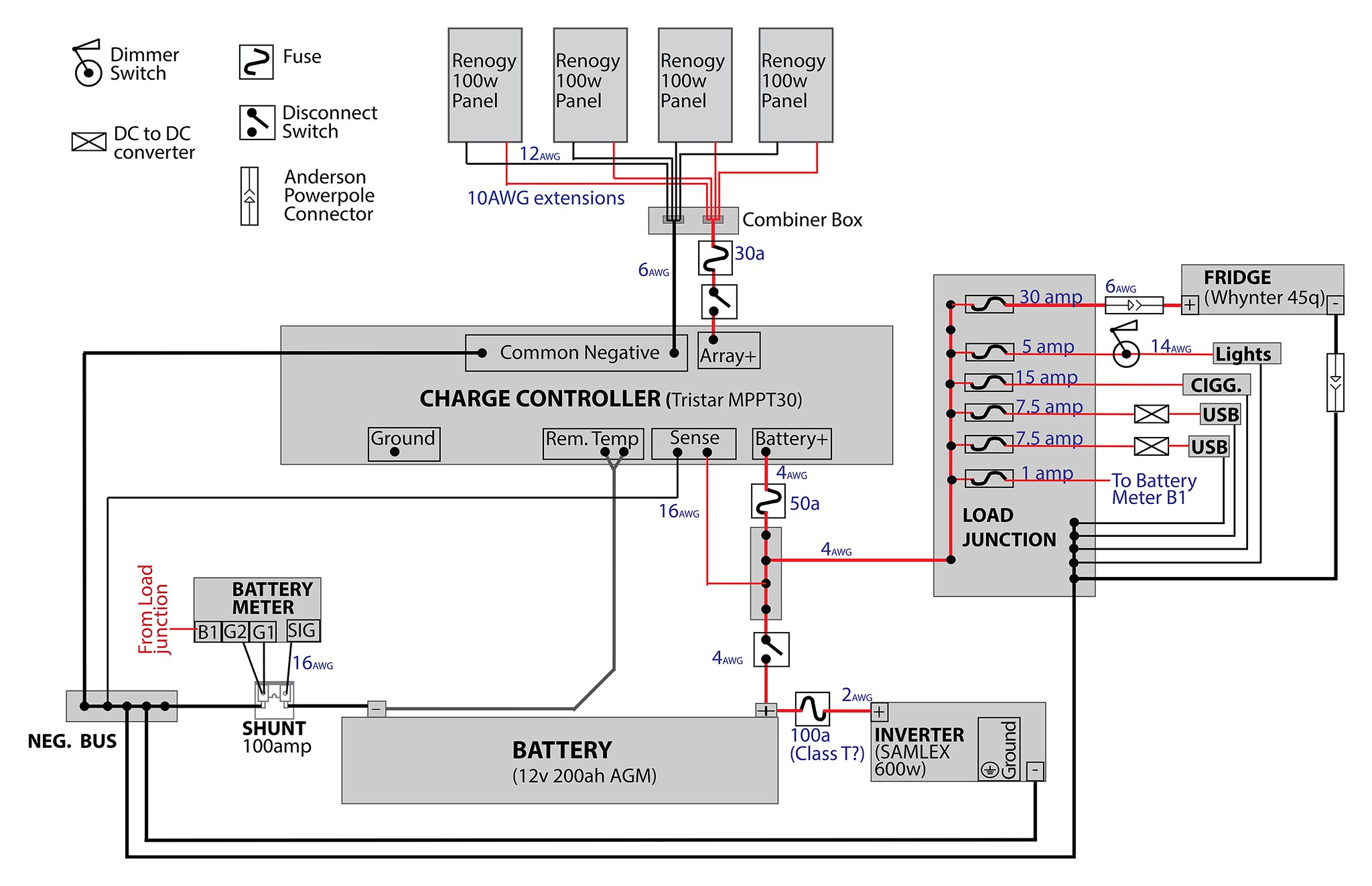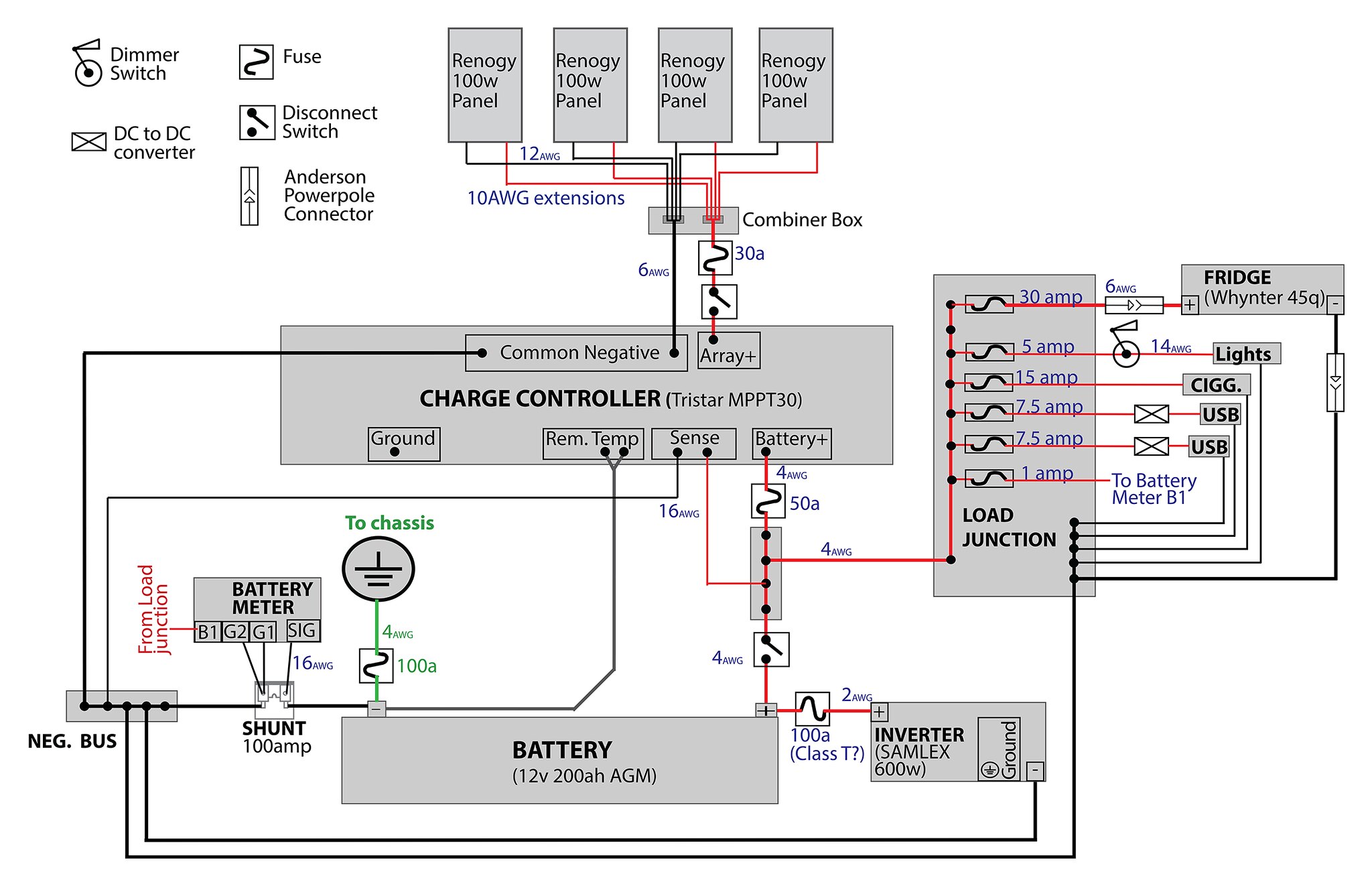FALCON
Well-known member
- Joined
- Mar 28, 2015
- Messages
- 500
- Reaction score
- 0
Hello! I’m designing and electrical system for my van and I could use some feedback and advice. I want to do things right the first time and make sure I’m building a system that is safe and will work well. I knew very little about electric systems when I started this, and I am still not sure that I have things correct. I'd greatly appreciate any feedback you have.
Here is the wiring diagram. I hope I’ve laid it out in a way that isn’t too hard to interpret.
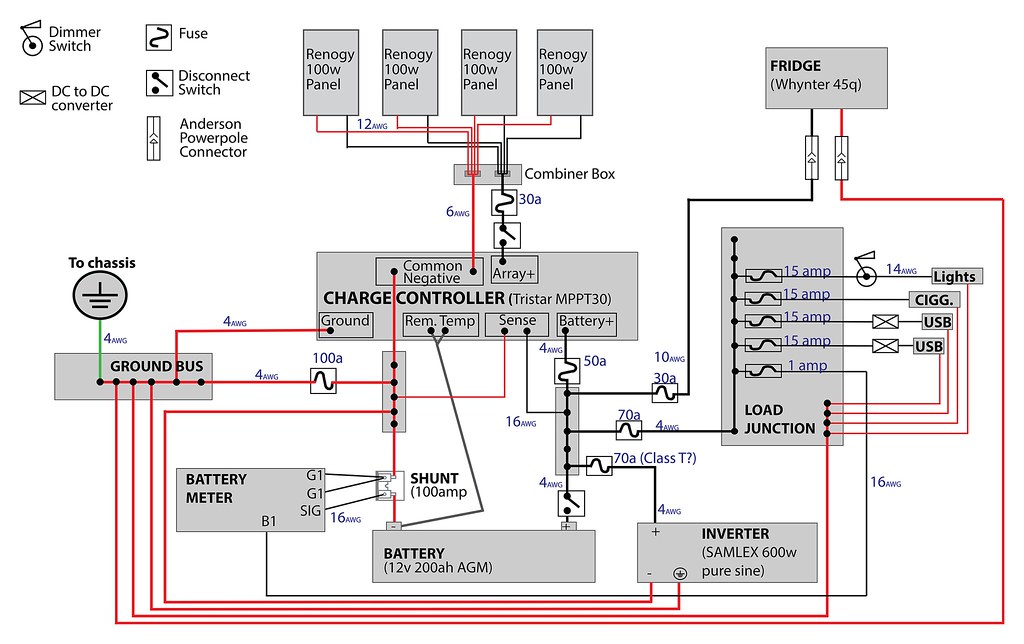
Link to full size version (2600x1650pixels)
Here are the questions that I have:
Overall system details:
Some other notes:
Here is the wiring diagram. I hope I’ve laid it out in a way that isn’t too hard to interpret.

Link to full size version (2600x1650pixels)
Here are the questions that I have:
- How does it look overall? Are things in the right place? What do I have wrong?
- Am I missing any important equipment?
- Do I need a ground fault protection device in the ground circuit? (more detail in notes below)
- Do the wire sizes and fuse sizes look reasonable? (If a wire size is not shown for a negative cable, it’s the same size as the positive one)
Overall system details:
- Solar array: 400 Watts (4x 100w Renogy mono panels)
- Charge controller: Morningstar Tristar MPPT 30 .. (pdf data sheet)
- Battery: 200 amp hour deep cycle (exact type TBD. Thinking of AGM)
- Inverter: Samlex pure sine 600w .. (pdf spec sheet)
- Battery monitor: Bogart engineering Trimetric
Some other notes:
- I still need to figure out the details for the load outlets after the load junction, so I don’t show detail for those. I’d like to use DC-DC converters so I can charge most of my devices that have AC-DC converter bricks without needing to use the inverter and then convert back to DC.
- There’s a good chance that in the future I will add a cable and solenoid to charge from the alternator. This is not in the design now
- I’ve tried researching ground fault protection but haven’t been able to make sense of it yet. My CC manual says “This unit is not provided with a GFDI device. This charge controller must be used with an external GFDI device as required by NEC article 690” and… “The electrical system negative should be bonded through a GFPD to earth ground at one (and only one) location”. I did look at article 690 but couldn’t make much sense of it, as it seems to be written with AC in mind(?)





